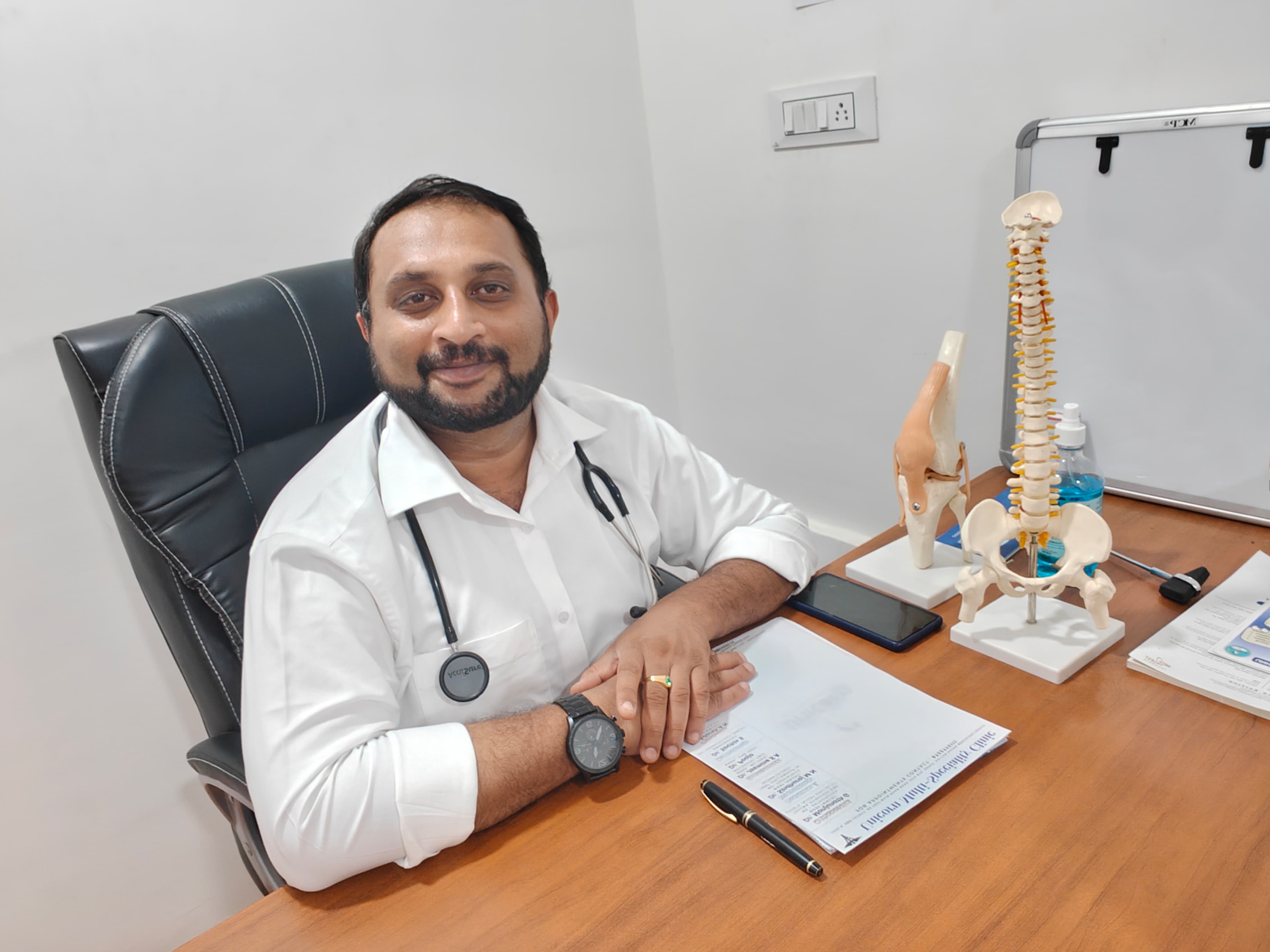How To Reduce Back Pain?
Discover practical tips to reduce back pain naturally. Learn about common causes, symptoms, and lifestyle changes that help relieve and prevent back discomfort.

Written by Dr.Sonia Bhatt
Last updated on 3rd Jul, 2025
.webp)
Introduction
Back pain is a common issue that affects millions of people worldwide. Whether it's due to poor posture, an injury, or a medical condition, back pain can disrupt daily life and make even simple tasks difficult. The good news is that there are many ways to manage and reduce back pain effectively. This article will explore the causes, symptoms, and practical tips to help you find relief.
Understanding Back Pain
Back pain can range from a dull, constant ache to a sudden, sharp pain. It may be acute (lasting a few days to weeks) or chronic (lasting more than three months). The pain can originate from muscles, nerves, bones, or joints in the spine.
1. Common Causes of Back Pain
Here are some common causes to be aware of:
1. Poor Posture – Sitting or standing incorrectly for long periods can strain your back muscles.
2. Muscle or Ligament Strain – Lifting heavy objects or sudden awkward movements can cause injury.
3. Herniated or Bulging Discs – Discs act as cushions between vertebrae; if they slip or rupture, they can press on nerves.
4. Arthritis – Osteoarthritis can affect the spine, leading to stiffness and pain.
5. Obesity – Excess weight puts extra pressure on the spine.
6. Sedentary Lifestyle – Lack of exercise weakens back muscles, making them more prone to injury.
7. Stress & Anxiety – Emotional stress can lead to muscle tension and back pain.
2. Symptoms to Watch For
Recognising the signs of back pain early can help with timely intervention:
Persistent pain in the lower, middle, or upper back
Stiffness or reduced flexibility
Sharp, shooting pain that radiates down the legs (sciatica)
Muscle spasms
Difficulty standing or walking for long periods
Consult Top Doctors for Your Symptoms
How to Reduce Back Pain?
Simple changes in your routine can make a big difference. Here are effective strategies to ease back discomfort:
1. Improve Your Posture
Paying attention to posture can prevent and relieve strain:
Sitting: Keep your back straight, shoulders relaxed, and feet flat on the floor. Use a chair with good lumbar support.
Standing: Distribute weight evenly on both feet, avoid slouching, and take breaks if standing for long periods.
Sleeping: Use a medium-firm mattress and sleep on your side with a pillow between your knees to align your spine.
2. Stay Active & Exercise Regularly
Movement strengthens your back and prevents stiffness:
Walking: A simple 30-minute walk daily can strengthen back muscles.
Stretching: Gentle stretches for the back, hamstrings, and hips improve flexibility.
Core Strengthening: Exercises like planks and pelvic tilts support the spine.
Yoga & Pilates: These improve posture, flexibility, and muscle strength.
3. Maintain a Healthy Weight
Extra weight, especially around the abdomen, strains the lower back. A balanced diet and regular exercise can help manage weight and reduce pressure on the spine.
4. Lift Objects Properly
Proper technique is crucial to avoid injury:
Bend at the knees, not the waist.
Keep the object close to your body.
Avoid twisting while lifting.
5. Apply Heat or Cold Therapy
Temperature-based treatments can ease pain and tension:
Cold Pack: Helps reduce inflammation in the first 48 hours after an injury.
Heat Pack: Relaxes tight muscles and improves blood flow for chronic pain.
6. Manage Stress
Stress tightens muscles, worsening back pain. Try relaxation techniques like:
Deep breathing exercises
Meditation
Gentle massage
7. Quit Smoking
Smoking reduces blood flow to the spine, slowing healing and increasing pain. Quitting smoking can support better back health.
8. Ergonomic Adjustments
Simple adjustments at work and home can protect your back:
Use a standing desk if sitting for long hours.
Adjust your computer screen to eye level.
Take short breaks to stretch every 30 minutes.
9. Over-the-Counter Pain Relief
Medications like ibuprofen or acetaminophen can help with pain and inflammation, but consult a doctor before long-term use.
When to See a Doctor
Seek medical help if:
Pain lasts more than a few weeks
Numbness, tingling, or weakness in legs
Back pain after a fall or injury
Unexplained weight loss or fever accompanying back pain
Conclusion
Back pain can be challenging, but it doesn’t have to control your life. By making small lifestyle changes, staying active, and practising good posture, you can significantly reduce discomfort.
If your pain persists or worsens, don’t hesitate to consult a healthcare professional. Book a consultation with an orthopaedic specialist on Apollo 24|7 through the app or website and take the first step toward a pain-free life!
Consult Top Orthopaedicians
Consult Top Doctors for Your Symptoms

Dr. Keshav Digga
Orthopaedician
14 Years • MBBS, MS Orthopaedics, FIASM, FIMISS
Kolkata
DIGGA HEALTHCARE, Kolkata

Dr. Pradeep Lucas
Orthopaedician
7 Years • MBBS, Diploma in Orthopaedics, Fellowship in DFSI
Bengaluru
Revival Multispeciality Clinic, Bengaluru
Dr. Anil Sharma
Orthopaedician
42 Years • MBBS, MS Orthopedics
New Delhi
AAKASH MEDSQUARE, New Delhi

Dr. Manjunath Giriyappa
Orthopaedician
9 Years • MBBS , MS (Orthopedics)
Bengaluru
Unicorn Multi-Speciality Clinic, Bengaluru

Dr. Sourav Kumar Pal
Orthopaedician
3 Years • MBBS, MS(ORTHO)
Malda
B S ORTHO, Malda
Consult Top Orthopaedicians

Dr. Keshav Digga
Orthopaedician
14 Years • MBBS, MS Orthopaedics, FIASM, FIMISS
Kolkata
DIGGA HEALTHCARE, Kolkata

Dr. Pradeep Lucas
Orthopaedician
7 Years • MBBS, Diploma in Orthopaedics, Fellowship in DFSI
Bengaluru
Revival Multispeciality Clinic, Bengaluru
Dr. Anil Sharma
Orthopaedician
42 Years • MBBS, MS Orthopedics
New Delhi
AAKASH MEDSQUARE, New Delhi

Dr. Manjunath Giriyappa
Orthopaedician
9 Years • MBBS , MS (Orthopedics)
Bengaluru
Unicorn Multi-Speciality Clinic, Bengaluru

Dr. Sourav Kumar Pal
Orthopaedician
3 Years • MBBS, MS(ORTHO)
Malda
B S ORTHO, Malda

